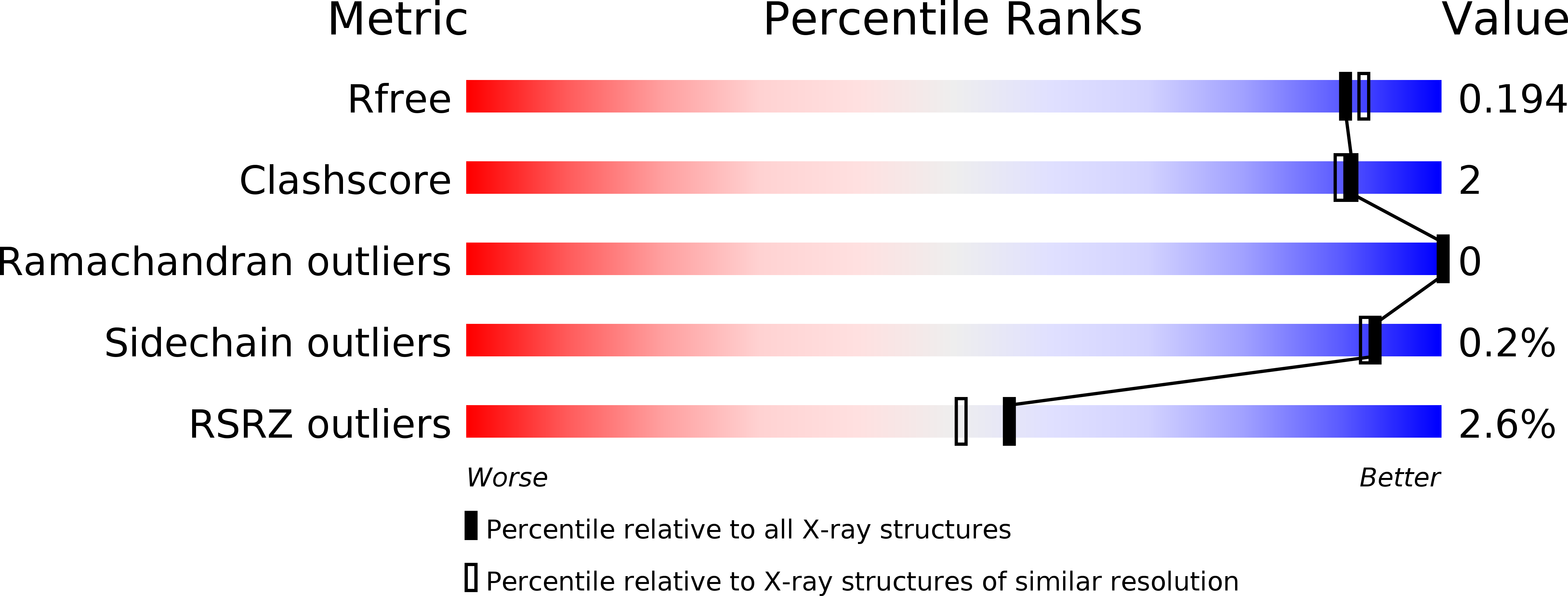
Deposition Date
2019-04-08
Release Date
2020-04-08
Last Version Date
2023-11-22
Entry Detail
PDB ID:
6JSU
Keywords:
Title:
Structure of Geobacillus kaustophilus lactonase, Y99C/D266N double mutant
Biological Source:
Source Organism:
Geobacillus kaustophilus (strain HTA426) (Taxon ID: 235909)
Host Organism:
Method Details:
Experimental Method:
Resolution:
1.80 Å
R-Value Free:
0.18
R-Value Work:
0.15
R-Value Observed:
0.16
Space Group:
P 1 21 1


